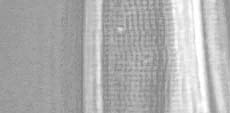This book, published in 1960, will fit right in with those of us using microscope models sold during that era. It is based on a course delivered by the author and designed for students and hobbyists. Is there anyone reading this blog who doesn't fall into one of those categories?
A great contemporary book for those interested in taking pictures through the microscope. The author understands his subject and has done a good job of transcribing that knowledge to the pages of this book. He is also known to frequent one of the Yahoo microscope groups where he helps with questions and posts about his hobby.
The best book I've found to help decipher the identity of those unknown critters found in many drops of water. It's set up as a key for protozoa with ample photos and drawings to help with the ID.
Another great book, and the title says it all. A mixture of technical information and essays on observations that will be both helpful and enjoyable. The book is no longer in print and demand has pushed the price of used copies far beyond the original price. I love what the internet has done to book accessibility but hate what it's done to prices.
This is an eBook about a comprehensive protozoan study in a small bog area of Germany. The book is filled with photos and is a
available online for a reasonable amount.
And then there is a whole treasure of books that are no longer copyrighted and freely available for download. Many of these are extremely relevant to what we're doing at the microscope today, in addition to being well written in a somewhat archaic tone. Most are littered with hand drawn illustartions. Here are three that I'm reading right now.
Common Objects of Microscopes
Evenings at the Microscope.
Half Hours with the Microscope.



















































.jpg)

.jpg)


